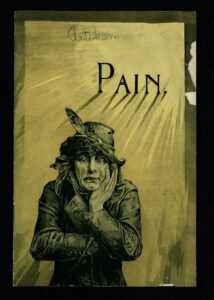– by Patrick Magee, Visitor Services/Gallery Associate

Did you like Medieval Medicine Mondays? We at the Museum did too, and it helped us gain insight into a bunch of medical oddities and trends over time! In this week’s blog entry, I want to once again shift our focus to a more recent time in medical history, one defined by printed pamphlets and a myriad of experimental drug treatments. Advertisements and texts meant for everyday people are a wonderful way to glean information about medical standards of the time and putting them into context can reveal something of a record of societal climate.

